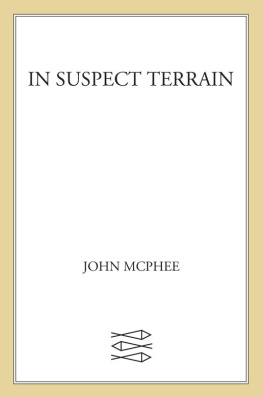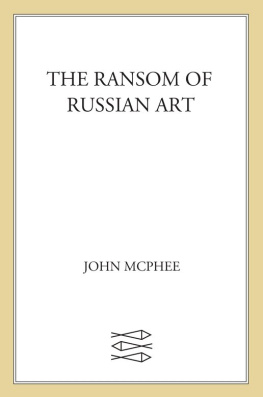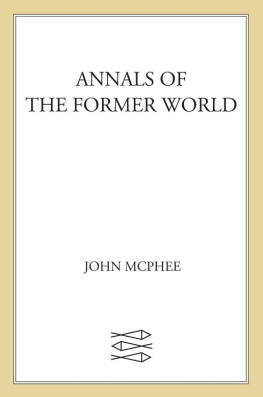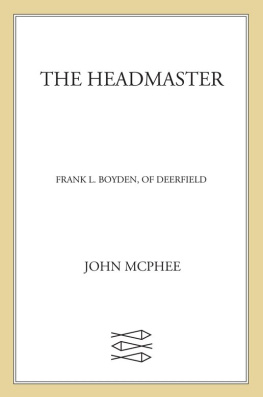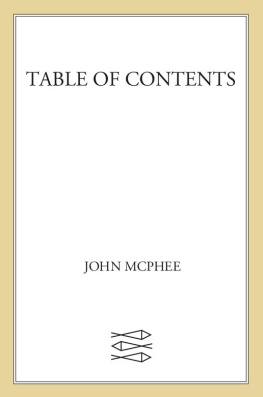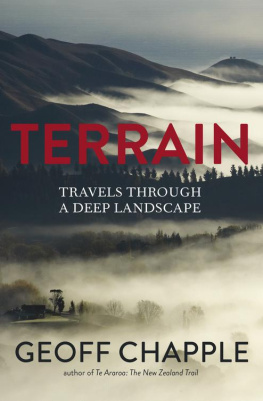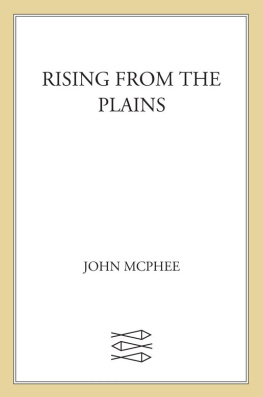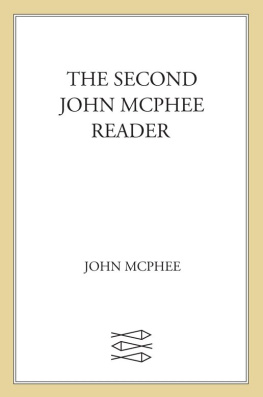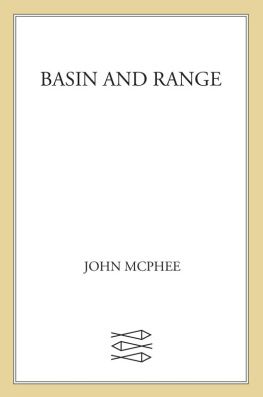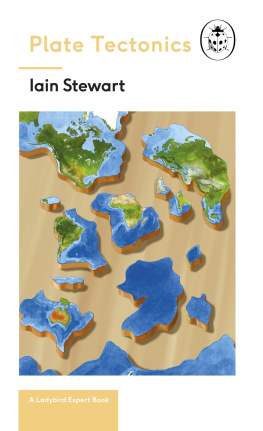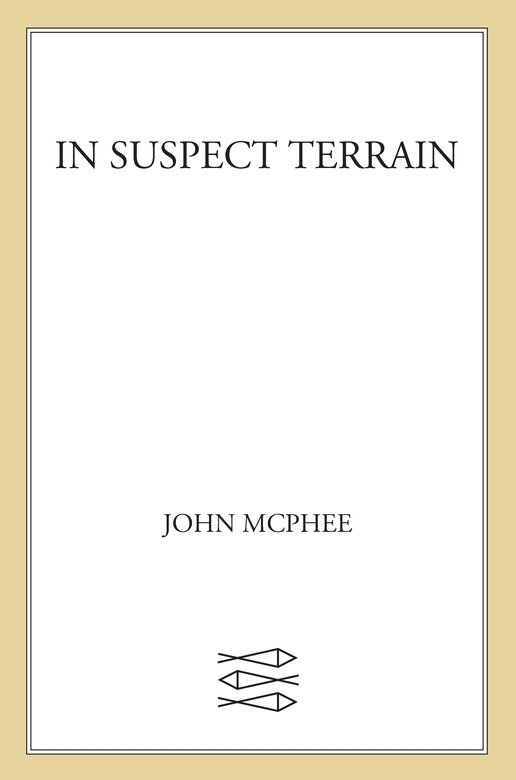T he paragraph that follows is an encapsulated history of the eastern United States, according to plate-tectonic theory and glacial geology.
About a thousand million years ago, a continent of unknown dimensions was rifted apart, creating an ancestral ocean more or less where the Atlantic is now. The older ocean has been called Iapetus, because Iapetus was the father of Atlas, for whom the Atlantic is named. Some geologists, who may feel that their science is dangerously clever, are snappish about Iapetus. They prefer to say proto-Atlantic. The ancestral ocean existed a great deal longer than the Atlantic has, but gradually, across some two hundred and fifty million years in the Paleozoic era, it closed. Moving toward each other, the great landmasses on either side buckled and downwarped the continental shelves and then came together in a crash no lessbrutal than slowa continent-to-continent collision marked by an alpine welt, which has reached its old age as the Appalachian Mountains. In the Mesozoic era, two hundred million years ago, rifting began again, pulling apart certain segments of the mountain chain, creating fault-block basinsremnants of which are the Connecticut River Valley, central New Jersey, the Gettysburg battlefields, the Culpeper Basinand eventually parting the earths crust enough to start a new ocean, which is now three thousand miles wide and is still growing. Meanwhile, a rhythm of glaciation has been established in what is essentially the geologic present. Ice sheets have been forming on either side of Hudson Bay and have spread in every direction to cover virtually all of Canada, New England, New York, and much of New Jersey, Pennsylvania, and the Middle West. The ice has come and gone at least a dozen times, in cycles that seem to require about a hundred thousand years, and, judging by other periods of glaciation in the earlier history of the earth, the contemporary cycles have only begun. About fifty more advances can be expected. Some geologists have attempted to isolate the time in all time that runs ten thousand years from the Cro-Magnons beside the melting ice to the maternity wards of the here and now by calling it the Holocene epoch, with the implication that this is our time and place, and the Pleistocenethe Ice Ageis all behind us. The Holocene appears to be nothing more than a relatively deglaciated interval.It will last until a glacier two miles thick plucks up Toronto and deposits it in Tennessee. If that seems unlikely, it is only because the most southerly reach of the Pleistocene ice fields to date stopped seventy-five miles shy of Tennessee.
Anita Harris is a geologist who does not accept all that is written in that paragraph. She is cool toward aspects of plate tectonics, the novel theory of the earth that explains mountain belts and volcanic islands, ocean ridges and abyssal plains, the deep earthquakes of Alaska and the shallow earthquakes of a fault like the San Andreas as components of a unified narrative, wherein the shell of the earth is divided into segments of varying size, which separate to form oceans, collide to make mountains, and slide by one another causing buildings to fall. In a revolutionary manner, plate-tectonic theory burst forth in the nineteen-sixties, and Anita Harris is worried now that the theory is taught perhaps too glibly in schools. In her words: Its important for people to know that not everybody believes in it. In many colleges, its all they teach. The plate-tectonics boys move continents around like crazy. They publish papers every year revising their conclusions. They say that a continental landmass up against the eastern edge of North America produced the Appalachians. I know about some of the geology there, and what they say about it is wrong. I dont say theyre wrong everywhere. Im open-minded. Too often, though, plate tectonics is oversimplified and overapplied.I get all heated up when some sweet young thing with three geology courses tells me about global tectonics, never having gone on a field trip to look at a rock.
As she made these comments, she was travelling west on Interstate 80, approaching Indiana on a gray April morning. She had brought me along to do geology, as geologists like to sayto see the countryside as she discerned it. Across New Jersey, Pennsylvania, and Ohio, she had been collecting, among other things, limestones and dolomites for their contained conodonts, index fossils from the Paleozoic, whose extraordinary utility in oil and gas exploration had been her discovery, with the result that Mobil and Chevron, Amoco and Arco, Chinese and Norwegians had appeared at her door. She was driving, and she wore a railroad engineers striped hat, a wool shirt, bluejeans, and old split hiking bootshydrochloric acid for testing limestones and dolomites in a phial in a case on her hip. With her high cheekbones, her assertive brown eyes, her long dark hair in twin ponytails, she somehow suggested an American aborigine. Of middle height, early middle age, she had been married twicefirst to a northern-Appalachian geologist, and now to a southern-Appalachian geologist. She was born on Coney Island and grew up in a tenement in Williamsburg Brooklyn. There was not a little Flatbush in her manner, soul, and speech. Her father was Russian, and his name in the old country was HerschelLitvak. In Brooklyn, he called himself Harry Fishman, and sometimes Harry Block. According to his daughter, English names meant nothing to Russian Jews in Brooklyn. She grew up Fishman and became in marriage Epstein and Harris, signing her geology with her various names and imparting some difficulty to followers of her professional papers. With her permission, I will call her Anita, and let the rest of the baggage go. Straightforwardly, as a student, she went into geology because geology was a means of escaping the ghetto. I knew that if I went into geology I would never have to live in New York City, she once said to me. It was a way to get out. She was nineteen years old when she was graduated from Brooklyn College. She remembers how pleased and astounded she was to learn that she could be paid for walking around in mountains. Paid now by the United States Geological Survey, she has walked uncounted mountains.
After the level farmlands of northwestern Ohio, the interstate climbed into surprising terrainsurprising enough to cause Anita to suspend her attack on plate tectonics. Hills appeared. They were steep in pitch. The country resembled New England, a confused and thus beautiful topography of forested ridges and natural lakes, stone fences, bunkers and bogs, cobbles and boulders under maples and oaks: Indiana. Rough and semi-mountainous, this corner of Indiana was giving the hummocky lie to the reputed flatness of the Middle West. Set firmly on the cratonthe Stable Interior Craton, unstirring core of the continentthe whole of Middle America is structurally becalmed. Its basement is coated with layers of rock that are virtually flat and have never experienced folding, let alone upheaval. All the more exotic, then, were these abrupt disordered hills. Evidently superimposed, they almost seemed to have been created by the state legislature to relieve Indiana. Not until the nineteenth century did people figure out whence such terrain had come, and how and why. Look close at those boulders and youll see a lot of strangers, Anita remarked. Red jasper conglomerates. Granite gneiss. Basalt. None of those are from anywhere near here. Theyre Canadian. They have been transported hundreds of miles.

